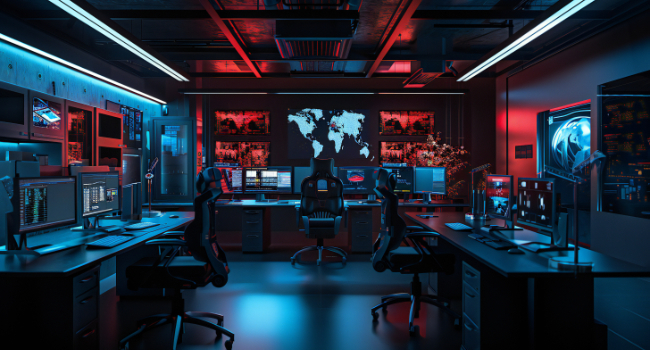
5 Reasons for Outsourcing Your SOC
- By Errol Fernandes
- Sep 04, 2024
The cyber threat landscape is constantly changing, so now more than ever, it is important for your business to have a technologically advanced Security Operations Centre (SOC).
But to be effective, a SOC needs more than just the latest technology. It also needs around-the-clock monitoring by cybersecurity experts who have the education, experience and knowledge to respond quickly at the first sign of trouble. Achieving this task in-house can be challenging and costly.
Fortunately, managing your own SOC is not the only choice. Here are five reasons to consider outsourcing SOC functions instead.
Reduce Cost and Complexity
Security is more complex today than ever before, and often depends on a customized set of specialized hardware and software solutions from dozens of brands. Those solutions need to be installed correctly, configured according to your needs and managed continuously. They also need to be kept up to date with the latest patches and upgrades – and then reconfigured to ensure it all still works together seamlessly.
All that needs a great deal of expertise and takes time. It can also involve significant ongoing investment, with large upfront expenditures whenever you need something new. If you do not have space, the physical footprint of the hardware infrastructure itself can add to the costs, requiring you to buy or lease a bigger data center.
With an outsourced SOC, you can avoid that complexity. You deal with one SOC service provider who can use partner relationships with leading hardware and software providers to deliver a complete, tailored SOC-as-a-service solution at an affordable and predictable monthly cost.
24/7/365 Protection
Threat actors do not take vacations, and they do not keep regular business hours. So, if you are only checking your security in an active manner from nine to five, Monday to Friday, you are leaving your organization open to significant risks.
Some companies rely on automated solutions that notify an on-call technician when an anomaly is detected after hours. While this approach is better than having no after-hours monitoring, it can still delay response times when breaches occur. And when every second counts, this can be critical.
The on-call technician may take time to log in or arrive on site, and when they get there, they may not have the skills to manage the issue quickly and effectively. More valuable time can then be lost trying to get in touch with the right person. All the while, a threat actor may be moving ever deeper into your network.
A dedicated SOC is fully staffed with security experts 24/7/365, so problems can be addressed at once, therefore limiting the impact on your organization and ensuring that your customers can get back to normal quickly.
Bridge the Skills Gap
Security experts need access to up-to-the-minute intelligence to stay ahead of ever-evolving threats. They also need constant upskilling as the technology and strategies for dealing with those threats change. Most organizations simply do not have the budget – or the time – to fully staff a resolute security team and keep them prepared for everything.
On top of that, the industry is facing a significant skills shortage that puts security experts in high demand. Even organizations that do want to staff an internal security team are likely to have trouble finding the talent they need and competing for it against companies with deeper pockets. This skills shortage is expected to last until at least 2026.1 No business can afford to wait that long.
Outsourcing your SOC will let you take advantage of a deep pool of constantly improving expertise, without having to add to your own organization’s headcount.
Stay Compliant with Evolving Regulations
If your organization manages data or takes payments, it is subject to compliance requirements from government, industry regulatory bodies and the payment card industry. Those requirements can be complex and may change. Your SOC analyst team needs to be always on top of them.
In many cases, compliance requires specific certifications that need to be achieved, managed and kept up to date – including ISO 27001 and SOC-2 for information security management systems. You also need to be able to show fully transparent reporting and traceability for audits and post-incident investigations.
With an outsourced SOC, you can be confident the right certifications are in place, and you can quickly and easily pull together everything you need to support an audit or post-incident investigation.
Retain Visibility into Operations
For many organizations, keeping full visibility into and control of IT security operations is a priority, and that is why they might choose to run their own SOCs. But without the right resources, you might not actually have the whole picture. If your tools are not tuned properly and your staff does not have the knowledge, skills and time to find and address issues, you might not be in control of your security as much as you think.
An outsourced SOC takes care of the day-to-day cybersecurity needs while offering full reporting and shared visibility into everything that happens. This often translates to increased visibility and a better understanding of your security environment and any incidents.
There is a compelling case for considering an outsourced service. But the provider you choose also makes a significant difference. Look for one who delivers consistent solutions, 24/7 protection, has the cybersecurity credentials and a team who can provide what is needed, and one that uses next-generation technologies backed by advanced ability and globally recognized procedures and capabilities.
This article originally appeared in the September / October 2024 issue of Security Today.